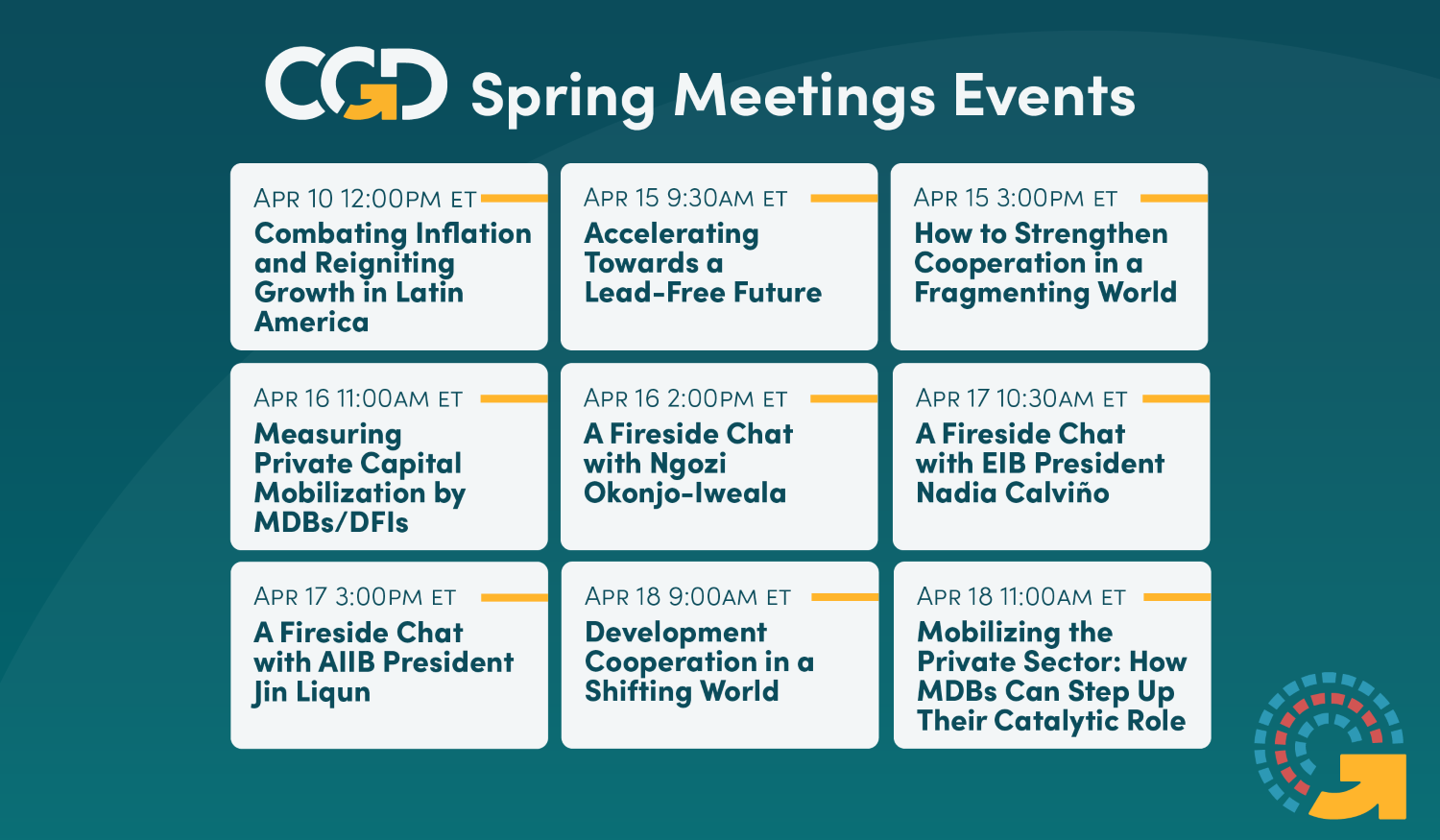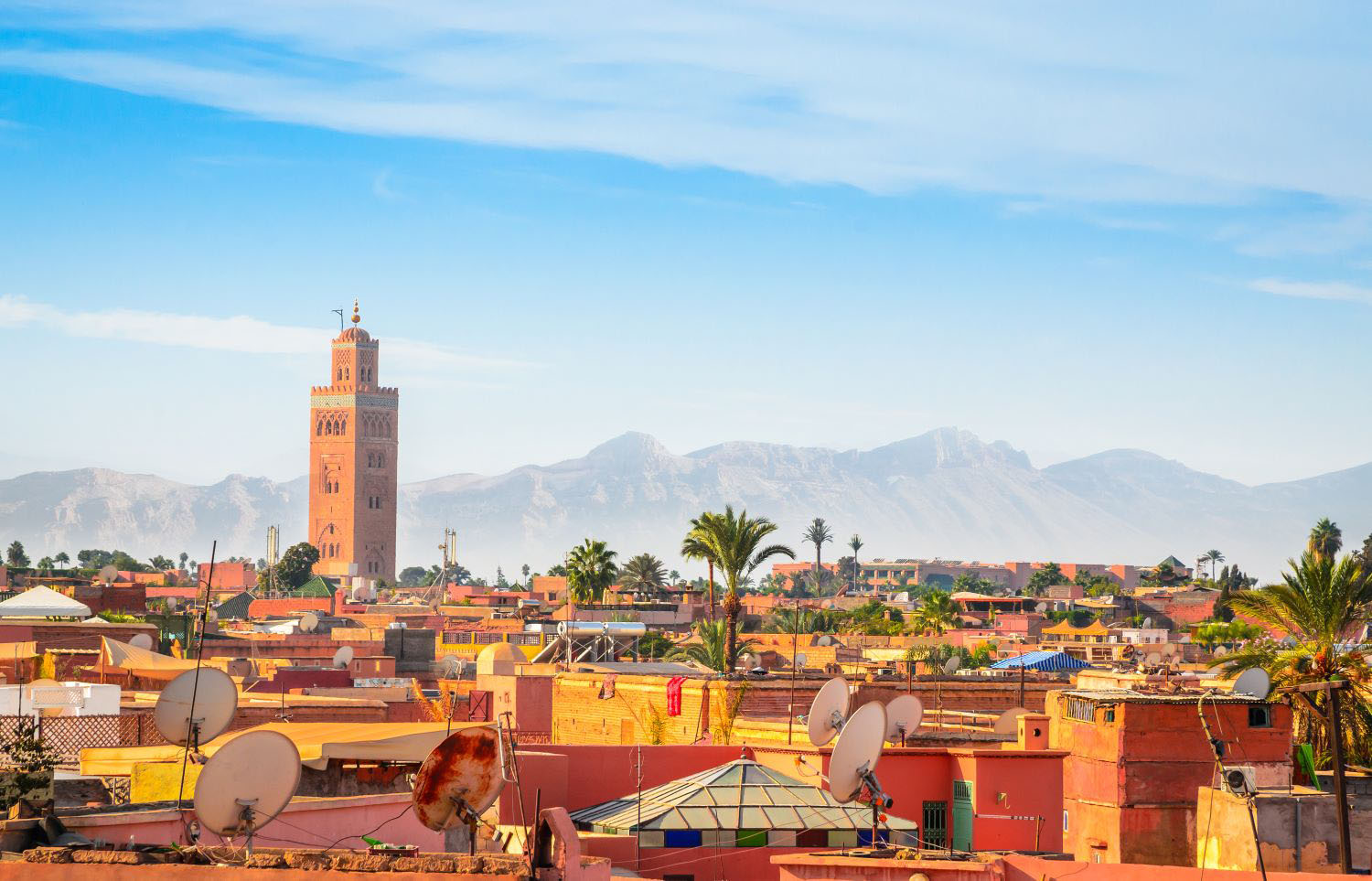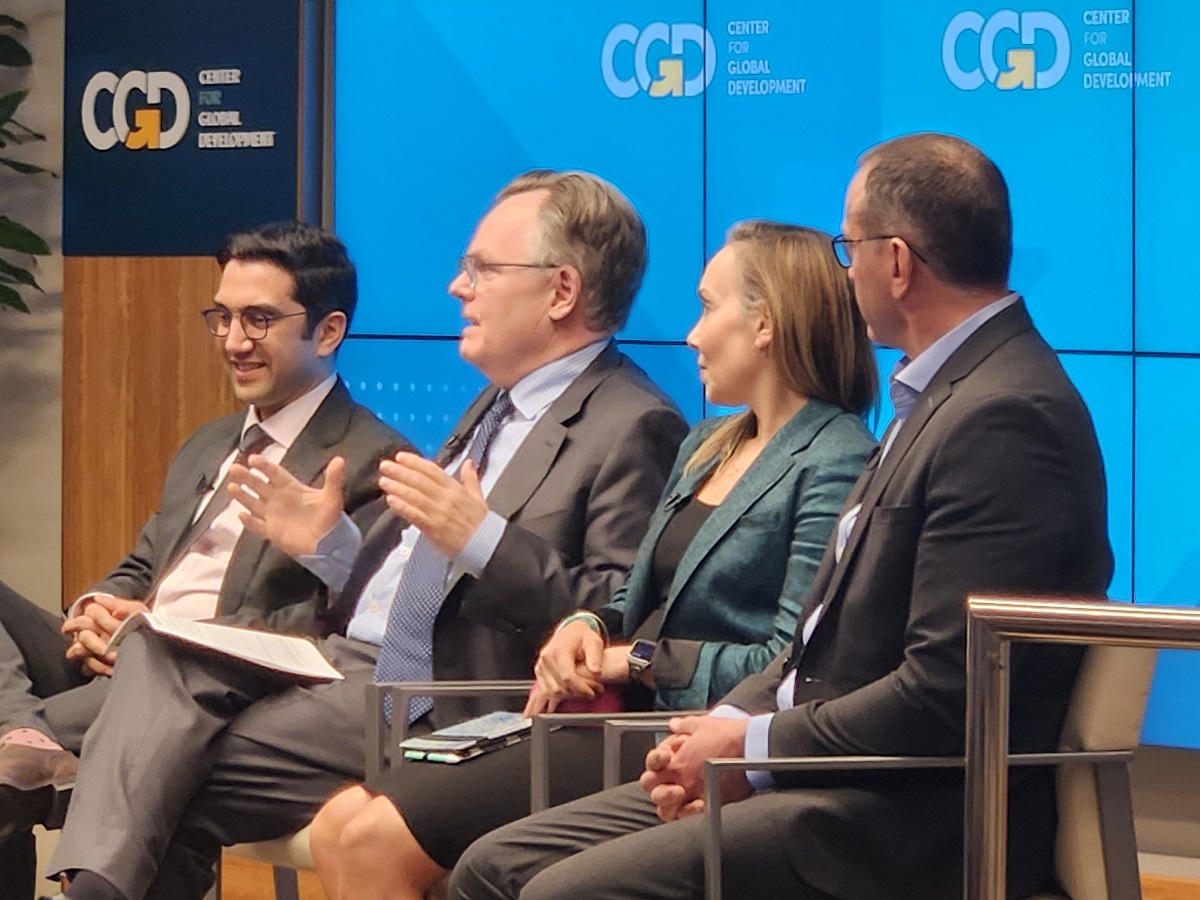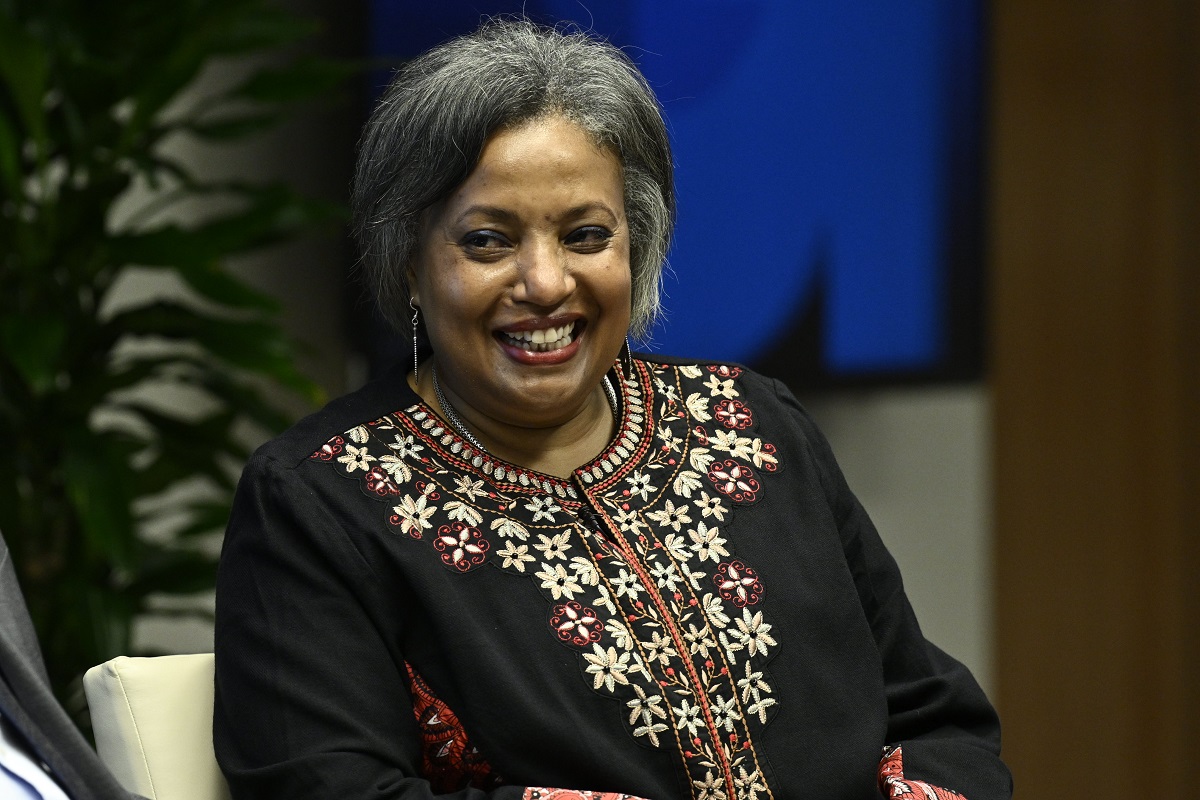Recommended

It's spring in DC, which means it's time once again for the IMF-World Bank Spring Meetings. Finance ministers, central bank governors, and other top officials from around the world gather to discuss the state of the world economy and the international financial architecture, and CGD's researchers are watching, engaging, and laying out their own proposals.
Six of CGD's experts lay out what they expect to see and what they hope to see at the Spring Meetings.
You can find more here about attending or tuning into all the events CGD is hosting alongside the spring meetings.
Is IDA, the arm of the World Bank that lends to the poorest countries, poised to break the $100-billion mark? World Bank President Ajay Banga challenged donors to make IDA21 a record replenishment, above the $93 billion achieved in the last round. The case for a meaningful IDA increase is strong: low-income countries have been hit hard by a series of crises from the COVID-19 pandemic and Russia’s war in Ukraine to supply chain disruptions and tightening financing conditions. As the largest source of concessional and grant finance for the world’s poorest countries, IDA has been a first port of call especially when other financing sources—including China and capital markets—are in retreat. While the overall IDA financing package will only come together later in the year, the Spring Meetings are a moment for donors to provide early assurances that they are preparing to heed Banga’s call. Last October, G20 finance ministers signed onto a communique saying they “looked forward to an ambitious IDA21 replenishment to increase IDA financing capacity.” At the Spring Meetings, I would hope they will assert their aim is to break the $100 billion mark for IDA this December.
For the IMF, the Spring Meetings will kick off a summer of internal and external reflection on its role, in anticipation of a celebration of the Fund’s 80th anniversary along with the appointment of a Managing Director. The current Managing Director Kristalina Georgieva (expected to be reappointed) started this reflection with a speech at Kings College, Cambridge in March, a fireside chat at CGD last week, and a joint forum with the World Bank on low-income countries a few days later.
At the meetings, we expect mostly lofty rhetoric, but finance ministers and central bank governors will begin to frame the substantial agenda for consideration during the rest of the year. This includes completion of a quota increase and more discussion on quota reform for the Fund, reconsideration of how much access countries can have to IMF lending, a look how the IMF lending facilities can be made more responsive to shocks in vulnerable country, and funding of the IMF’s concessional lending facilities. One thing that should happen at the time of the meetings and probably won’t is approving the recycling of special drawing rights (SDRs) to multilateral development banks (MDBs)—a proposal that the IMF has stalled for almost two years.
Next week I will be looking for evidence of how the World Bank’s “evolution agenda” has progressed since October. To recap, the centerpiece of this agenda was the adoption of the World Bank’s “livable planet” framework and its eight “global challenges” (climate/adaptation, fragility and conflict, pandemic prevention, energy access, food security, water security, digitalization, and protecting biodiversity and nature). Since then, shareholders have been negotiating a financial framework to deliver on this agenda, the details of which should be made public during the Spring Meetings. This is likely to include new donor funding in the form of guarantees and hybrid capital as well as clarification on the terms and conditions for accessing these resources.
Readers may recall that shareholders also agreed last October that to incentivize demand for global challenges—especially climate mitigation—some resources would need to be provided on concessional terms for middle-income borrowers (i.e., the big emitters like Brazil, India, and Indonesia). In plain English, this means using grants to reduce the cost of World Bank borrowing by middle-income countries. I have expressed doubts—and remain dubious—about the ability of the World Bank to find sources for these grants, especially as donors are already under pressure to deliver on a record replenishment for IDA. So here’s the threshold question: If the new framework enables higher lending volumes to support the livable planet agenda, but does little to defray the cost of doing business, how will borrowers respond?
I will also be interested to see how Banga is faring in his effort to make the World Bank a better partner—a goal he has characterized as a legacy issue—despite bureaucratic resistance and inertia, and whether there will be news on the private sector agenda.
There won’t be much public information on IDA, as donors are in the early stages of replenishment negotiations, but I will be watching for initial signs around donor ambition for funding and reform priorities. As my colleague Mary Borrowman flags below, I hope donors get credible assurances that the designation of gender as a “lens” rather than a focus area in no way risks sidelining the agenda. My colleagues and I will have more to say on that later.
This is the year where the rubber has to hit the road on MDB reform. If it doesn't, inertia could set in, at a time when we can't afford an underperforming MDB system. Our updated and expanded MDB reform tracker (coming Thursday) will make it easy to assess where we see progress and where we don't. More progress is especially needed in making more efficient use of MDB capital, adding to capital (including through hybrid capital), transforming MDB engagement with country clients, and translating changes in the private finance arms of MDBs into actual step changes in private finance mobilization. The Spring Meetings are the first big test of reform momentum.
I would ask four questions to judge progress at this stage. (1) Will MDBs actually use the analysis on callable capital to adjust their risk tolerance and leverage ratios? (2) Are IDA donors leaning in to, or shrinking from, a large increase in grants to IDA? (3) Will the new World Bank corporate scorecard measure success through ambitious outcome—rather than input— targets? (4) And will MDB heads double down on their resolve and concrete actions to work together as a system?
Both the World Bank and the IMF have now characterized the current debt dilemma as primarily a liquidity squeeze. In that context, it would be beneficial if both institutions can work with shareholders to increase their amount of lending (especially concessional lending) now and over the next few years. As Clemence highlighted, IDA’s replenishment will be incredibly important for this. For the IMF, it recently announced that it will likely meet its precautionary balance target at the end of the year. The Fund’s executive board is considering options to use excess balances including to support concessional lending to low-income countries. Turning to countries in solvency crises, as the Global Sovereign Debt Roundtable and other meetings take place, it would be helpful to see proposals by the IMF and World Bank adopted including setting timelines for debt restructuring negotiations and immediately suspending debt repayments for nations that apply for the Common Framework.
What will the push to simplify IDA (being referred to as “SimplifIDA”) mean for gender equality and inclusion in this year’s IDA replenishment? Though little information has been made public, things seem to be moving very quickly with negotiations on policy commitments following the first IDA Deputies’ meeting in March, and what we are hearing indicates potentially extensive changes and big implications. This includes changes to framework language and how gender is positioned within it, as well as cuts to policy commitments across the board. I will be watching IDA21 discussions for signals which allay concerns that gender is being deprioritized in this replenishment compared to IDA20 and which instead reflect continued growing ambition from the World Bank and its shareholders on gender equality and sexual orientation and gender identity (SOGI) inclusion at this critical time. This is essential for consistency with the increased ambition in the World Bank’s 2024-2030 Gender Strategy, which is expected to be released in the coming months. IDA has been key in supporting the implementation of the current gender strategy’s objectives through commitment monitoring and sustained, cross-sectoral financing that is “uniquely suited to support gender equality outcomes,” in the Bank’s own words. The Spring Meetings will be an important and telling forum for dialogue leading up to the next IDA Deputies meeting, with much at stake that needs careful consideration and balance amidst institutional streamlining. This includes the push for a consistent framing with the Corporate Scorecard, which is set to be released at the Spring Meetings and which I will also be watching to evaluate how the World Bank will be tracking outcomes, including on gender equality and inclusion.
Disclaimer
CGD blog posts reflect the views of the authors, drawing on prior research and experience in their areas of expertise. CGD is a nonpartisan, independent organization and does not take institutional positions.
Image credit for social media/web: SimoneD. McCourtie / World Bank






